Experience Tranquility at Xiaoyao Jin and Huchun Garden: A Must-Visit Destination
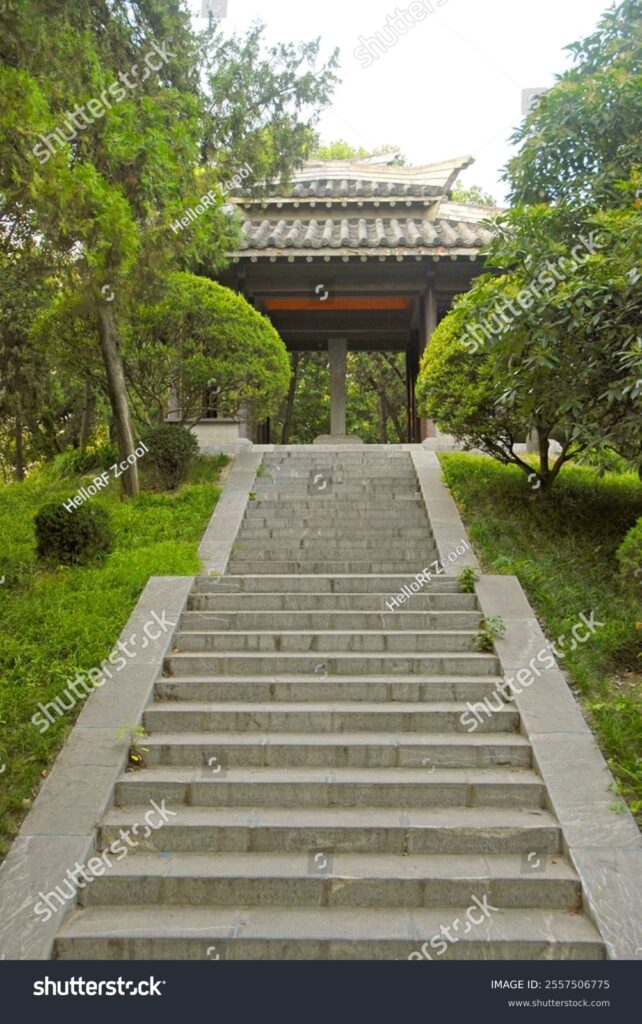
An Essential Guide to Visiting Xiaoyao Jin And Huchun Garden
In This Guide
- An Essential Guide to Visiting Xiaoyao Jin And Huchun Garden
- The Rich History and Legends of Xiaoyao Jin And Huchun Garden
- Main Highlights: What You Absolutely Can’t Miss
- Planning Your Visit: A Practical Guide
- Tickets: Prices, Booking, and Tips
- How to Get There: A Complete Transportation Guide
- Local Cuisine and Accommodation Nearby
- Frequently Asked Questions
- Final Thoughts on Your Trip
Nestled in the heart of Zhoukou, the Xiaoyao Jin and Huchun Garden area is a harmonious blend of history, culture, and natural beauty. This enchanting locale is not just a feast for the eyes; it is a vibrant testament to China’s rich heritage, offering visitors an immersive experience into the world of traditional Chinese gardens and the philosophies that underpin them.
A Historical Tapestry
Xiaoyao Jin, which translates to “Carefree Well,” is steeped in legend, believed to be the site where a famous poet once found solace. The gardens surrounding this historic well are designed to evoke a sense of tranquility and reflection, mirroring the very essence of Chinese garden philosophy. The space is meticulously crafted to guide visitors through a sensory journey—where every rock, plant, and water feature serves a purpose in both aesthetic and spiritual realms.
The Art of Chinese Gardens
Huchun Garden, renowned for its classic design, exemplifies the principles of harmony and balance that are fundamental to Chinese aesthetics. Here, you will encounter the delicate interplay between nature and architecture. The garden features winding paths, serene ponds, and quaint pavilions, each thoughtfully arranged to create a picturesque landscape that invites contemplation and connection with nature.
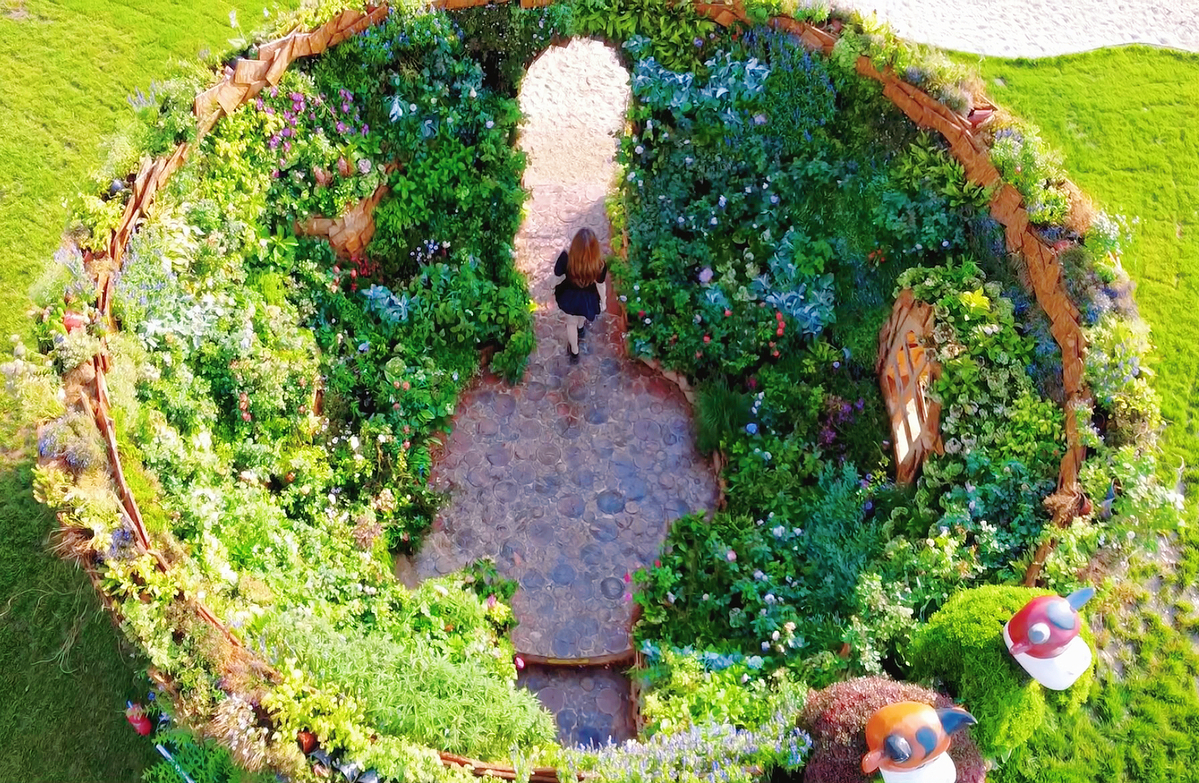
Xiaoyao Jin And Huchun Garden.
Highlights to Explore
When visiting Xiaoyao Jin and Huchun Garden, make sure to:
- Wander the Pathways: Lose yourself in the winding trails that meander through lush greenery and carefully curated landscapes.
- Appreciate the Architecture: Marvel at the traditional pavilions and bridges, which reflect the grandeur of ancient Chinese design.
- Engage with Nature: Take a moment to appreciate the flora and fauna, as the gardens are home to a diverse range of plant species that bloom throughout the seasons.
- Reflect by the Water: Enjoy the serene ponds, where the reflections of the surrounding trees create a stunning visual tapestry.
- Discover Cultural Significance: Learn about the symbolism behind various elements in the garden, which often reflect philosophical concepts such as yin and yang and the balance of opposites.
Practical Tips
- Best Time to Visit: Early spring and autumn are ideal for witnessing the gardens in full bloom and enjoying pleasant weather.
- Guided Tours: Consider joining a guided tour to gain deeper insights into the history and cultural significance of the gardens.
- Photography: Bring your camera to capture the stunning vistas and intricate details that characterize this enchanting landscape.
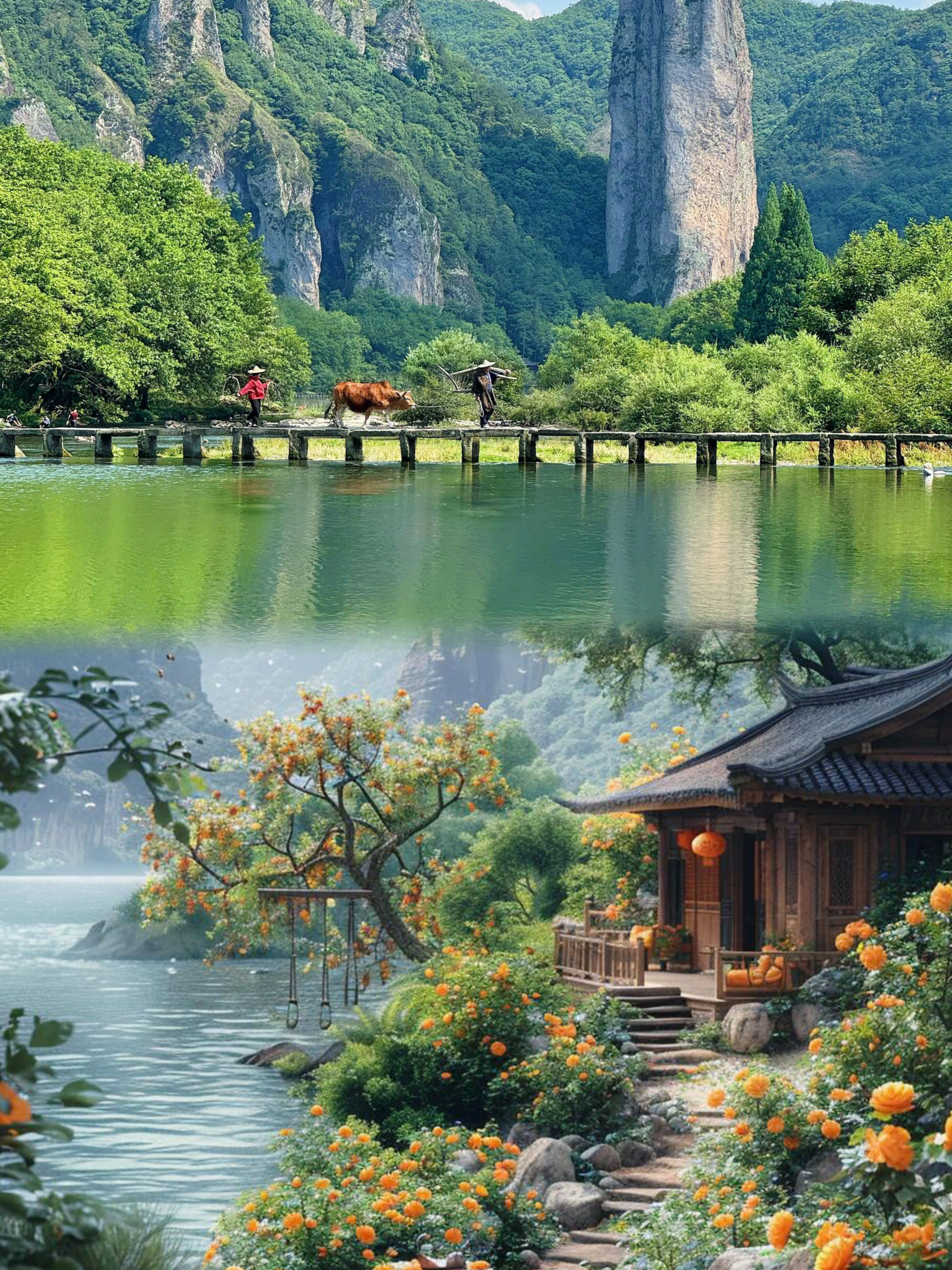
Xiaoyao Jin And Huchun Garden.
In conclusion, a visit to Xiaoyao Jin and Huchun Garden is more than just a leisurely stroll through beautiful scenery; it is an opportunity to connect with the profound cultural and historical narratives that define Chinese civilization. Whether you are a history buff, a nature lover, or simply seeking a serene escape, this picturesque destination promises an unforgettable experience that will linger long after you leave.
The Rich History and Legends of Xiaoyao Jin And Huchun Garden
A Journey Through Time: The Rich History and Legends of Xiaoyao Jin and Huchun Garden
Nestled in the heart of Zhoukou, the Xiaoyao Jin and Huchun Garden area is steeped in a tapestry of history and folklore that captivates all who visit. These two sites, rich in cultural significance, offer an unparalleled glimpse into the ancient narratives that have shaped Chinese civilization.
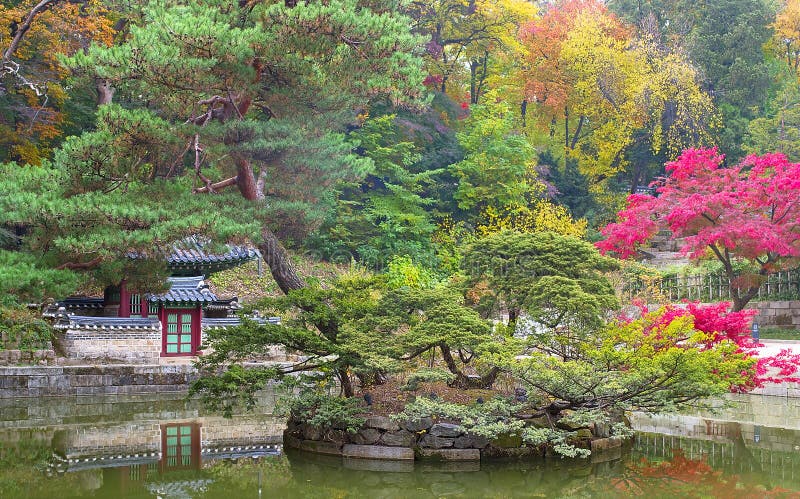
Xiaoyao Jin And Huchun Garden.
Xiaoyao Jin: The Legend of the Free and Easy
Xiaoyao Jin, or “The Free and Easy Place,” is imbued with the charm of legends that date back over a thousand years. According to ancient stories, this serene locale was a favored retreat for scholars and poets during the Tang and Song dynasties. It is said that the famous poet Li Bai often strolled through its picturesque landscape, drawing inspiration from its tranquil beauty for his celebrated verses.
The legend of Xiaoyao Jin also intertwines with tales of a mythical figure, the Daoist immortal Zhang Sanfeng, who is believed to have practiced alchemy and meditated here. His presence symbolizes the philosophical pursuit of harmony between humanity and nature, a core tenet of Chinese thought. As you wander through the landscape, you can almost hear the echoes of poetry and philosophy that once reverberated across its hills and waters.
Huchun Garden: A Historical Oasis
Adjacent to Xiaoyao Jin lies Huchun Garden, a stunning example of traditional Chinese garden design. This garden is not only a visual feast but also a historical treasure trove. It was established during the Ming dynasty and reflects the quintessential elements of classical Chinese gardens, including intricate rockeries, flowing water, and meticulously arranged flora.
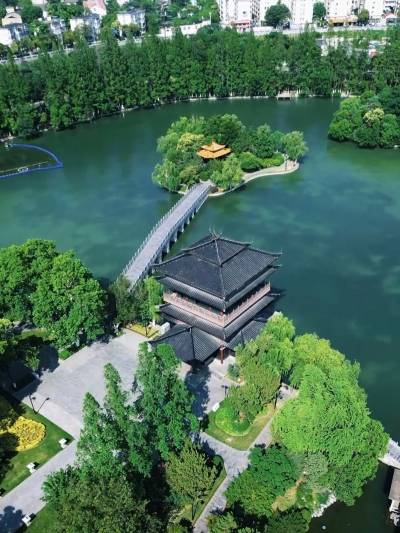
Xiaoyao Jin And Huchun Garden.
Huchun Garden is renowned for its seasonal beauty, with each corner transformed by the changing light and colors throughout the year. The garden features several pavilions, each with its own story. One such pavilion is the “Yuexin Pavilion,” where, according to legend, lovers would meet under the moonlight to exchange vows of devotion. This romantic backdrop has inspired countless couples, making it a popular destination for those seeking to celebrate love amidst nature’s splendor.
Symbolism and Cultural Significance
Both Xiaoyao Jin and Huchun Garden embody the philosophical ideals of Taoism and Confucianism, where nature is seen as a refuge for reflection and self-cultivation. The gardens not only serve as aesthetic spaces but also as metaphysical landscapes where one can connect with the essence of life.
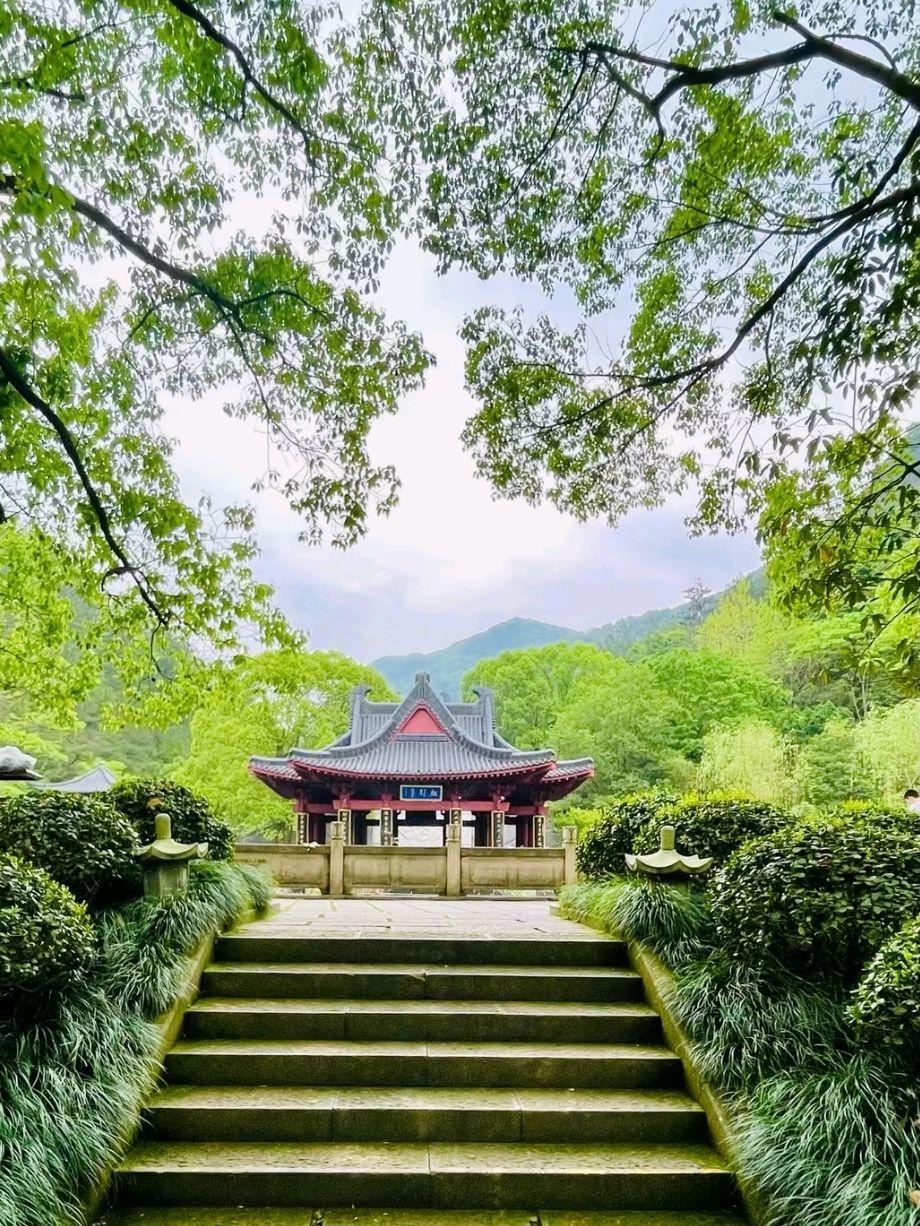
Xiaoyao Jin And Huchun Garden.
Visitors may notice that the layout of these gardens intentionally creates a sense of journey, guiding one through a series of vistas that encourage contemplation. This design philosophy is rooted in the ancient belief that every element of the garden—be it a stone, a tree, or a pond—holds deeper meanings and stories waiting to be discovered.
Experiencing the Myths and Realities
To truly appreciate the significance of Xiaoyao Jin and Huchun Garden, one must engage with the myths that envelop them. Whether it’s through guided tours that recount the tales of poets and immortals or through leisurely strolls that allow for personal reflection, these gardens invite you to step into a world where history and legend intertwine seamlessly.
As you explore the winding paths and serene waters, take a moment to breathe in the fragrant blossoms and listen to the whispers of the past. The legends of Xiaoyao Jin and Huchun Garden are not merely stories; they are the threads that weave together the rich tapestry of Chinese culture, history, and philosophy.

Xiaoyao Jin And Huchun Garden.
In conclusion, a visit to these historic sites is more than just a stroll through beautiful gardens; it is an invitation to delve into the heart of Chinese heritage, where every stone and tree tells a story, and every breeze carries the essence of ages long gone.
Main Highlights: What You Absolutely Can’t Miss
Discover the Unmissable Attractions of Xiaoyao Jin and Huchun Garden
Nestled in the historical context of Huaiyang in China, the Xiaoyao Jin and Huchun Garden area is a treasure trove for those eager to explore the rich tapestry of Chinese history and culture. Here are the key highlights that promise an unforgettable experience:
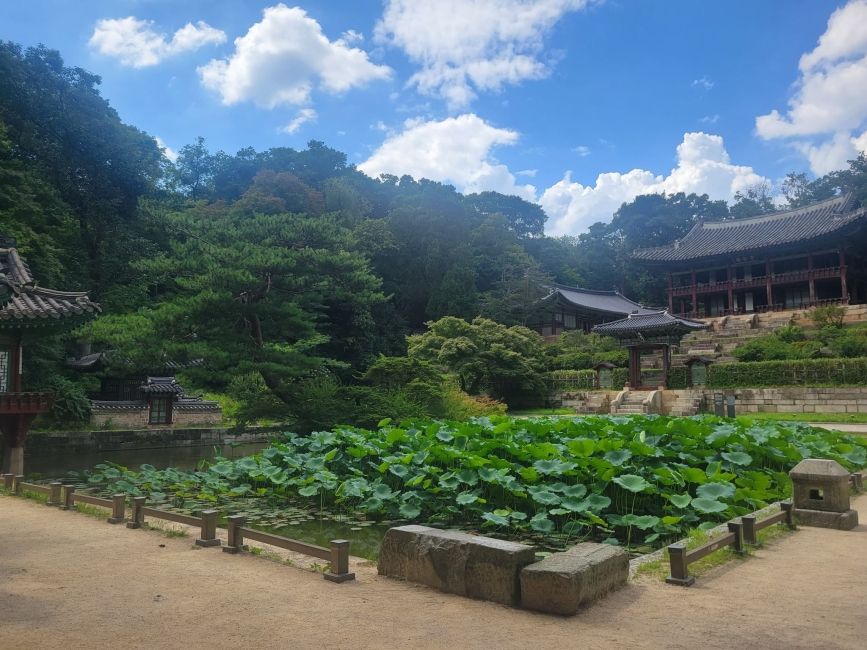
Xiaoyao Jin And Huchun Garden.
1. Xiaoyao Jin (逍遥津)
- Historical Significance: This scenic area is steeped in legend, famously associated with the Tang dynasty poet Li Bai, who penned verses inspired by its beauty. As you stroll through the lush landscapes, imagine the poetic musings that have echoed through centuries.
- Architectural Marvels: The ancient pavilions and bridges are not only visually stunning but also reflect the classic architectural styles of dynastic China. Be sure to capture the intricate carvings and exquisite details that tell stories of a bygone era.
2. Huchun Garden (湖春园)
- An Exemplary Chinese Garden: Renowned for its artistic landscaping, Huchun Garden embodies the principles of classical Chinese garden aesthetics. Here, nature and art blend seamlessly, inviting visitors to experience tranquility and reflection.
- Seasonal Beauty: Each season transforms the garden, from the vibrant blossoms of spring to the serene snowscapes of winter. Plan your visit accordingly to witness the garden’s seasonal showcases, particularly the cherry blossoms in early spring.
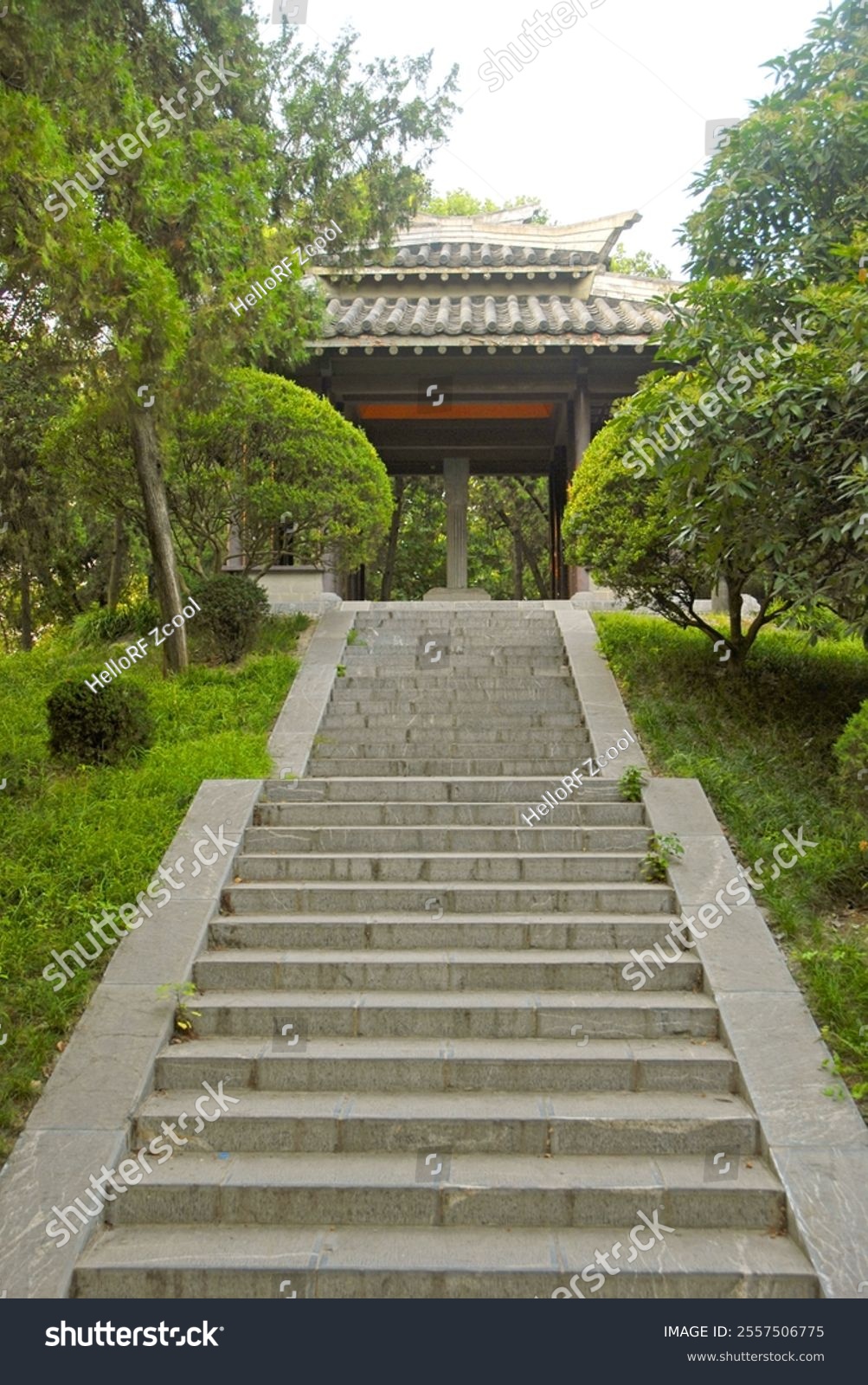
Xiaoyao Jin And Huchun Garden.
3. Cultural Performances and Events
- Traditional Arts: Engage with the local culture through performances of traditional Chinese music and dance that often take place in these gardens. These events provide a vibrant backdrop to your exploration and a deeper understanding of the cultural significance of the area.
- Festivals: If your visit coincides with local festivals, such as the Lantern Festival, don’t miss the opportunity to partake in festive activities and enjoy the illuminated beauty of the gardens at night.
4. Natural Scenery
- Lakes and Waterways: The tranquil lakes and flowing streams within the garden grounds provide a picturesque setting for leisurely walks and contemplation. Renting a boat for a gentle paddle can offer a unique perspective of the stunning surroundings.
- Flora and Fauna: Keep an eye out for various plant species and birdlife that inhabit this serene environment. The gardens are meticulously maintained to preserve their natural beauty, making them a perfect spot for nature enthusiasts and photographers alike.
5. Local Cuisine
- Taste the Region: After a day of exploration, savor the local culinary delights that Huaiyang has to offer. Renowned for its Huaiyang cuisine, known for its delicate flavors and artistic presentation, dining at a local restaurant will be the perfect way to conclude your visit.
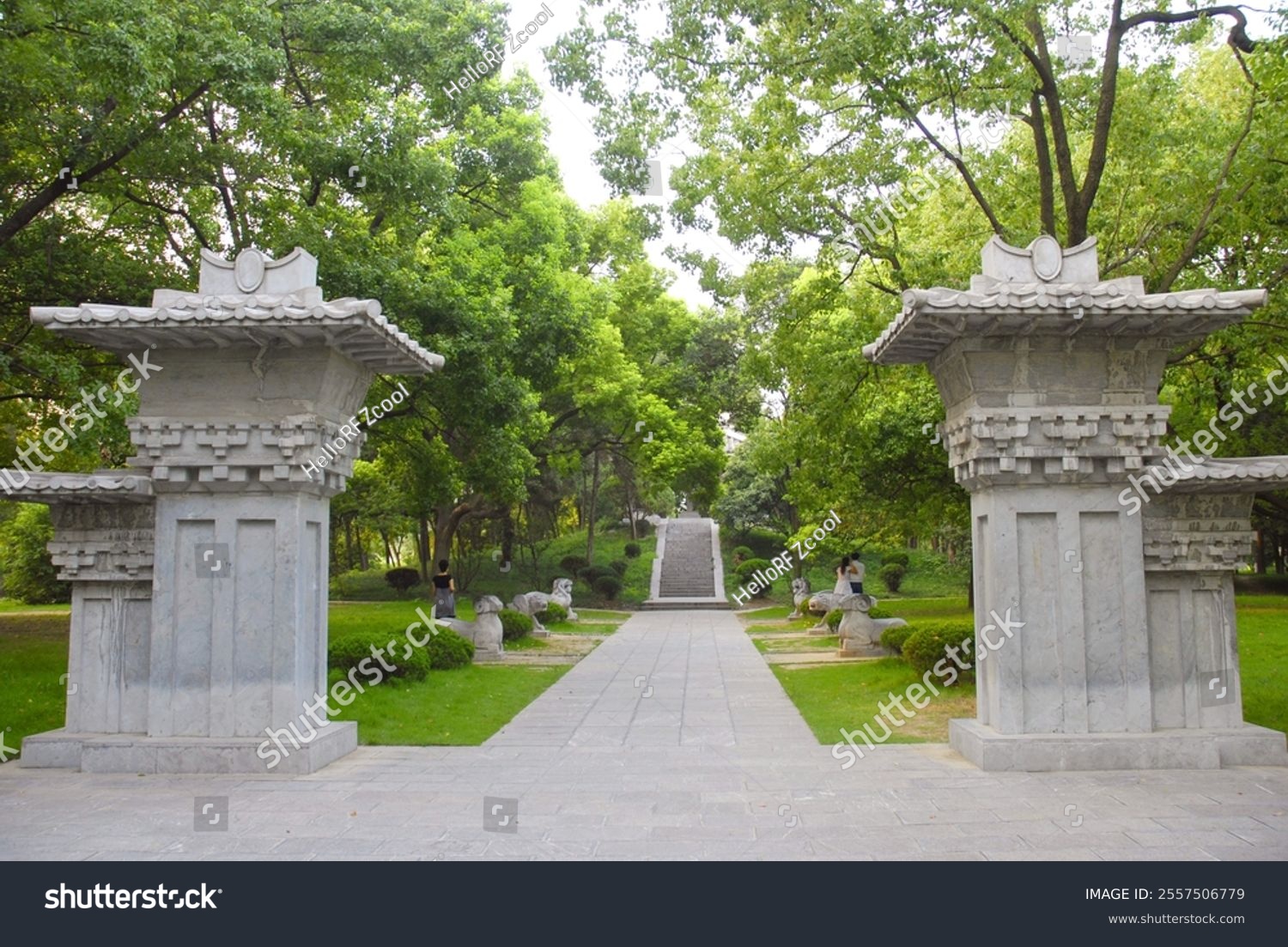
Xiaoyao Jin And Huchun Garden.
6. Historical Context
- Cultural Heritage: The area surrounding Xiaoyao Jin and Huchun Garden is rich in history, with roots tracing back to the Yellow River civilization. Learning about the historical context enhances your appreciation of the sites you visit.
Tips for Your Visit
- Timing: Early mornings or late afternoons provide the best light for photography and a more serene atmosphere.
- Guided Tours: Consider joining a guided tour to gain deeper insights into the history and cultural significance of the area.
- Respect Nature: As you explore, be mindful of the gardens’ delicate ecosystems and adhere to local guidelines to preserve their beauty for future generations.

Xiaoyao Jin And Huchun Garden.
Xiaoyao Jin and Huchun Garden are not just destinations; they are gateways to understanding the profound connection between nature, art, and history in Chinese culture. Whether you’re a history buff, a nature lover, or simply seeking tranquility, this enchanting locale promises a rich and rewarding experience.
Planning Your Visit: A Practical Guide
Essential Information for Visiting Xiaoyao Jin and Huchun Garden
Overview
Nestled in the heart of Huaiyang, the Xiaoyao Jin and Huchun Garden (周口淮阳太昊陵·龙湖风景区) offers a captivating glimpse into China’s rich history and exquisite garden culture. This destination is not only a feast for the eyes but also a profound space for reflection on traditional Chinese aesthetics and philosophy.
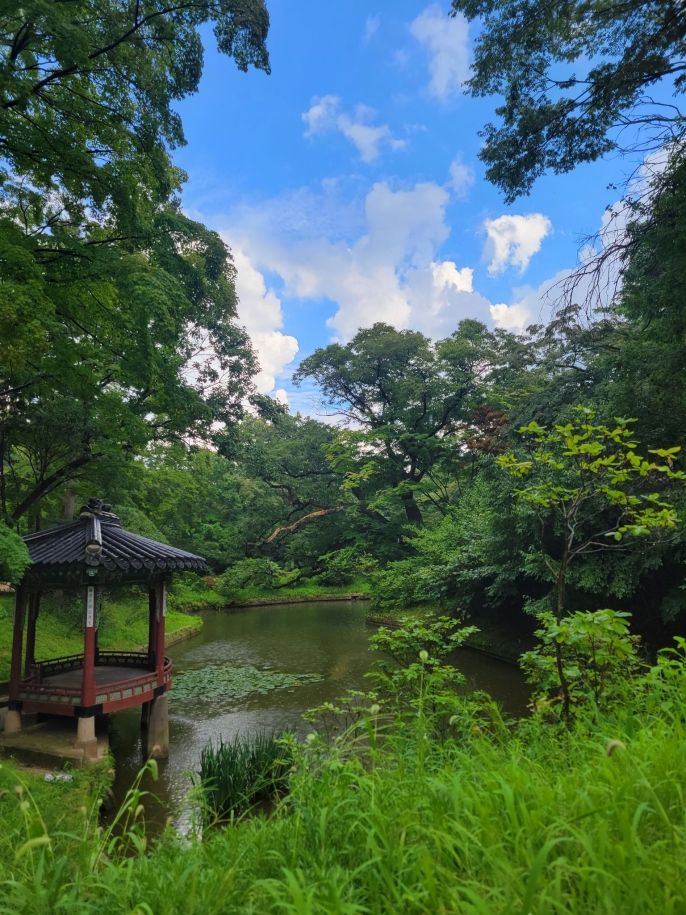
Xiaoyao Jin And Huchun Garden.
Getting There
Location
Xiaoyao Jin is located in Huaiyang County, Henan Province, approximately 10 kilometers from the city center of Zhoukou. The Huchun Garden is adjacent, making it convenient for visitors to explore both sites in a single trip.
Transportation Options
– By Air: The nearest airport is Zhoukou Airport (周口机场), about 30 kilometers away. From there, you can take a taxi or a local bus to reach the gardens.
– By Train: Zhoukou Railway Station connects to major cities in China. Once at the station, taxis are readily available.
– By Bus: Local buses frequently run from Zhoukou city center to Huaiyang, where you can catch a bus or taxi to the gardens.
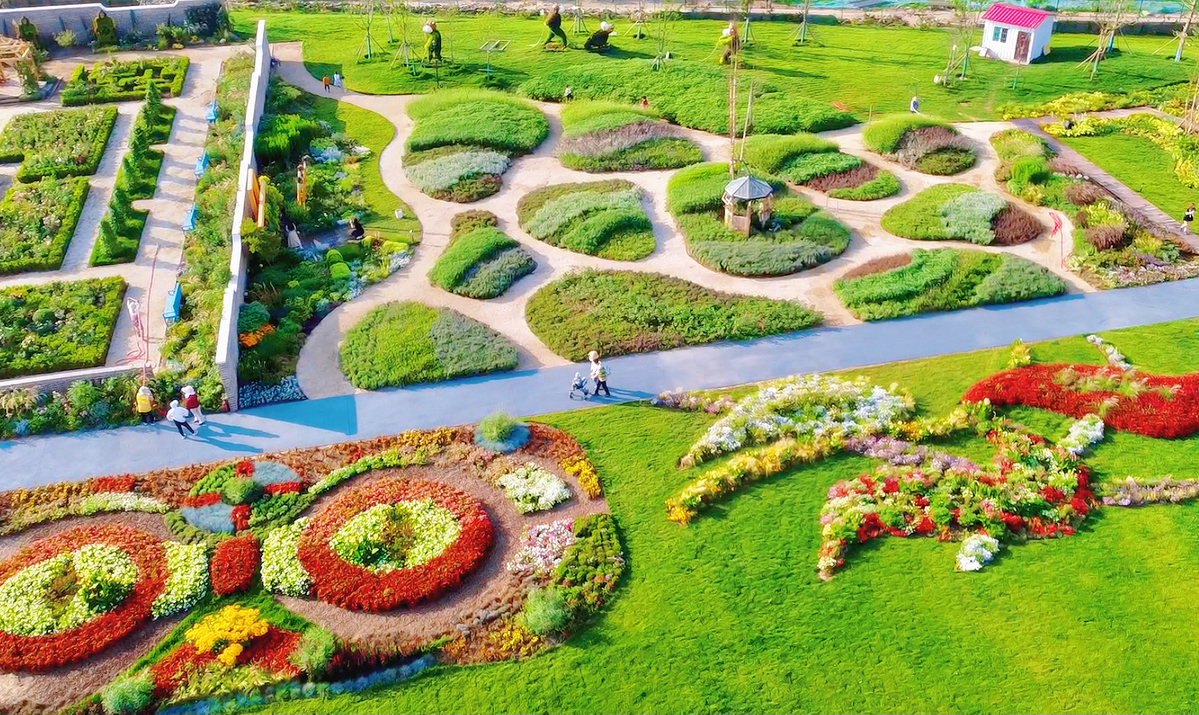
Xiaoyao Jin And Huchun Garden.
Opening Hours and Admission
Hours
The gardens are generally open from 8:00 AM to 6:00 PM daily. However, it’s advisable to check local listings or the garden’s official website for any seasonal variations or special events.
Admission Fees
While entry to the Huchun Garden is generally free, there may be a small fee for specific attractions within the complex, such as guided tours or special exhibitions.
What to Expect
Cultural Significance
Xiaoyao Jin and Huchun Garden are steeped in historical significance, commemorating the legendary Emperor Taikang from the Xia Dynasty. The gardens encapsulate the essence of classical Chinese landscape design, emphasizing harmony between nature and architecture.
Garden Features
– Scenic Landscapes: Expect to find meticulously arranged flora, tranquil water features, and charming pavilions that embody the principles of Chinese garden aesthetics.
– Historical Sites: Don’t miss the ancient monuments and inscriptions that tell the story of the area’s rich past.
– Art Installations: Look for modern interpretations of traditional motifs that bridge the gap between past and present.
Tips for Visitors
- Wear Comfortable Shoes: The gardens cover a large area with various walking paths. Comfortable footwear will enhance your experience.
- Timing Your Visit: Early mornings or late afternoons are ideal for a quieter experience and stunning natural light for photography.
- Engage with Local Guides: Consider hiring a guide to gain deeper insights into the historical context and cultural significance of the gardens.
- Respect Local Customs: Be mindful of local etiquette, especially in sacred areas or when observing traditional practices.
Nearby Attractions
After exploring Xiaoyao Jin and Huchun Garden, consider visiting these nearby points of interest:
- Taohai Tomb: The burial site of Emperor Taikang, which is a short distance from the gardens.
- Local Markets: Experience the vibrant local culture by visiting nearby markets where you can taste traditional Huaiyang cuisine.
- Historical Museums: The Huaiyang Museum offers a look into the region’s history and artifacts.
Final Thoughts
A visit to Xiaoyao Jin and Huchun Garden promises a rich blend of nature, history, and culture. Whether you’re wandering through the serene landscapes or contemplating the philosophical underpinnings of the garden design, this destination invites you to connect deeply with China’s historical narrative. Prepare to be inspired by the beauty and tranquility that awaits you in this enchanting locale.
Tickets: Prices, Booking, and Tips
When planning a visit to Xiaoyao Jin and Huchun Garden in the scenic area of Zhoukou, Huaiyang, understanding the ticketing process is crucial for a smooth experience. Here’s everything you need to know about ticket prices, booking options, and helpful tips for your journey into this historical and cultural treasure.
Ticket Prices
- General Admission: The entrance fee is approximately ¥50 (about $7.50 USD) for adults.
- Discounted Tickets: Students and seniors over 60 years old can avail of discounted tickets priced at ¥25 (around $3.75 USD).
- Children: Children under 1.2 meters in height enjoy free entry.
- Special Exhibitions: Some temporary exhibitions may require an additional fee, typically ranging from ¥10 to ¥30 (approximately $1.50 to $4.50 USD).
Booking Information
- Online Booking: Tickets can be purchased in advance through various travel websites and the official site of the Xiaoyao Jin scenic area. This is highly recommended, especially during peak tourist seasons, to avoid long queues.
- On-site Purchase: If you prefer spontaneity, tickets are available at the entrance. However, availability may be limited during busy periods.
- Group Discounts: If you’re traveling with a group of ten or more, inquire about group discounts at the ticket counter.
Tips for Your Visit
-
Best Time to Visit: Early mornings or late afternoons are ideal for experiencing the gardens’ tranquility and capturing stunning photographs, especially during the blooming seasons of spring and summer.
-
Accessibility: The gardens are designed to be accessible to all visitors, including those with mobility challenges. Paths are well-maintained, and facilities are available throughout the area.
-
Guided Tours: Consider joining a guided tour, which can enrich your understanding of the historical significance and architectural beauty of the gardens. English-speaking guides are often available.
-
Cultural Etiquette: As you explore, be mindful of the cultural significance of the sites. Take time to appreciate the serene atmosphere, and observe quietness, especially in areas designated for reflection.
-
Bring Cash: While many establishments accept mobile payments, having some cash on hand is advisable for small purchases or in case of technical issues.
-
Stay Hydrated: The gardens cover a large area. Bring a water bottle to stay refreshed, especially during warmer months.
-
Photography: Capture the beauty of the gardens, but be aware of any signs indicating restrictions on photography in certain areas to respect the serene environment.
With its rich cultural heritage and stunning landscapes, Xiaoyao Jin and Huchun Garden promise an unforgettable experience. By planning ahead and following these guidelines, you’ll be well-equipped to immerse yourself in the beauty and history of this remarkable site.
How to Get There: A Complete Transportation Guide
Getting to Xiaoyao Jin and Huchun Garden: Your Transportation Guide
Visiting Xiaoyao Jin and Huchun Garden (周口淮阳太昊陵·龙湖风景区) is a journey into the heart of Chinese history and culture, surrounded by stunning landscapes and serene gardens. To ensure a seamless travel experience, here’s a detailed guide on how to reach this picturesque destination.
By Air: The Nearest Airports
- Zhoukou Airport (周口机场)
- Distance from Xiaoyao Jin and Huchun Garden: Approximately 30 kilometers.
-
Details: This airport primarily serves domestic flights. From major cities like Beijing, Shanghai, or Guangzhou, you can take a flight to Zhoukou.
-
Wuhan Tianhe International Airport (武汉天河国际机场)
- Distance from Xiaoyao Jin and Huchun Garden: About 300 kilometers.
- Details: A larger international airport, offering a wider range of flights. If traveling from abroad, you may find it more convenient to fly into Wuhan and then continue your journey to Zhoukou.
By Train: Rail Travel Options
China’s extensive rail network makes train travel an excellent option:
- Zhoukou Railway Station (周口火车站)
-
Trains from major cities including Zhengzhou, Xi’an, and Beijing arrive here. Travel times vary, with high-speed trains being the fastest option.
-
From Zhoukou Railway Station to Xiaoyao Jin and Huchun Garden:
- By Taxi: The most convenient way to reach the gardens from the station is by taxi, which takes about 30 minutes.
- Public Bus: You can also opt for a local bus, but this may take longer and require transfers.
By Bus: Long-Distance and Local Buses
-
Long-Distance Buses: Regular buses operate from major cities like Zhengzhou or Wuhan to Zhoukou. The journey could take anywhere from 4 to 6 hours depending on traffic and road conditions.
-
Local Buses: Once in Zhoukou, local buses frequently run to Xiaoyao Jin and Huchun Garden. Check local schedules for timings and routes.
By Car: Self-Driving Tips
For those who prefer the freedom of driving:
-
Road Access: Xiaoyao Jin and Huchun Garden are accessible via G107 and G311 national highways. The drive from Zhoukou is straightforward and offers scenic views along the way.
-
Rental Options: Car rental services are available at both Zhoukou Airport and Railway Station, providing you with flexibility in your schedule.
Local Transportation: Getting Around the Gardens
Once you arrive at Xiaoyao Jin and Huchun Garden, take advantage of the following options to explore the area:
-
Walking: The gardens are designed to be pedestrian-friendly, allowing you to immerse yourself in the beautiful landscapes at your own pace.
-
Bicycles: Renting a bicycle can be a delightful way to navigate the expansive grounds, especially during pleasant weather.
-
Guided Tours: Consider joining a guided tour that offers insights into the rich history and cultural significance of the gardens.
Final Thoughts
No matter how you choose to arrive, the journey to Xiaoyao Jin and Huchun Garden is as enriching as the destination itself. Prepare for a blend of natural beauty and cultural heritage that awaits you in this remarkable part of China. Happy travels!
Local Cuisine and Accommodation Nearby
Discovering Local Flavors and Comfortable Stays Near Xiaoyao Jin and Huchun Garden
When visiting the enchanting Xiaoyao Jin and Huchun Garden, immersing yourself in the local cuisine and finding suitable accommodation can significantly enhance your travel experience. This region, rich in history and culture, offers delightful culinary options and welcoming places to rest after a day of exploration.
Local Cuisine
Exploring the culinary landscape of this area is a must for any traveler. The cuisine here reflects the rich heritage of the region, blending traditional flavors with local ingredients. Here are some local dishes you shouldn’t miss:
-
Huaiyang Cuisine: Renowned as one of the Four Major Chinese Cuisines, Huaiyang cuisine emphasizes fresh ingredients and delicate flavors. Be sure to try the Braised Pork with Brown Sauce (红烧肉), which is succulent and rich.
-
Steamed River Fish: Sourced from local waters, river fish is often steamed with ginger and scallions, offering a light and flavorful dish that highlights the region’s natural bounty.
-
Dumplings (饺子): A staple in Chinese cuisine, the dumplings here are made fresh and can be filled with various ingredients, including seasonal vegetables and meats. Look for local eateries that offer unique fillings.
-
Noodle Soup: Enjoy a warm bowl of handmade noodles, often served in a savory broth with vegetables and tender meats. This dish is perfect for a comforting meal after a day of sightseeing.
-
Sesame Cakes (芝麻饼): These crispy cakes are a popular street food snack, often enjoyed with tea. The nutty flavor of sesame seeds makes them a delightful treat.
Accommodation Options
After indulging in the local cuisine, you’ll want a comfortable place to unwind. Here are some recommended accommodations that cater to different preferences and budgets:
-
Xiaoyao Jin Hotel
Located just a short walk from the gardens, this hotel offers modern amenities with a touch of local charm. Guests can enjoy spacious rooms, an on-site restaurant serving Huaiyang cuisine, and easy access to the scenic landscapes. -
Huchun Garden Resort
For a more immersive experience, consider staying at this resort, which beautifully integrates nature and luxury. With stunning views of the garden and tailored services, it’s an ideal spot for relaxation. -
Budget Guesthouses
There are several guesthouses and hostels in the area that provide affordable accommodation without sacrificing comfort. Many of these family-run establishments offer home-cooked meals and personalized guidance on local attractions. -
Boutique Hotels
For travelers seeking a unique stay, boutique hotels in nearby towns often reflect the local architecture and history. Expect charming decor and attentive service, making your trip memorable. -
Traditional Inns
Experience the local culture by staying in a traditional inn, where you can enjoy local hospitality and perhaps even participate in cooking classes that focus on regional cuisine.
Final Thoughts
Your visit to Xiaoyao Jin and Huchun Garden is not just about the stunning landscapes and historical significance; it’s also an opportunity to savor the rich flavors of Huaiyang cuisine and find a cozy place to rest. Whether you opt for a luxurious resort or a charming guesthouse, the local food and hospitality will undoubtedly leave a lasting impression on your journey through this remarkable area of China.
Frequently Asked Questions
Frequently Asked Questions
1. What is Xiaoyao Jin and Huchun Garden known for?
Xiaoyao Jin and Huchun Garden are celebrated for their exquisite landscapes that reflect traditional Chinese garden design principles. The gardens harmoniously blend natural elements with artistic touches, creating spaces that encourage reflection and tranquility. This area also holds historical significance, tied to the ancient culture of Huaiyang.
2. How do I get to Xiaoyao Jin and Huchun Garden?
The gardens are located in the Huaiyang District of Zhoukou City, Henan Province. They can be reached via public transportation or by taxi from nearby cities. If you’re driving, the site is well-marked, and parking is available on-site.
3. What are the best times to visit?
The ideal times to visit are during spring (April to May) and autumn (September to October) when the weather is mild, and the gardens are in full bloom. Early mornings or late afternoons offer a quieter experience, allowing for peaceful exploration and photography.
4. Are there any entrance fees?
Yes, there is a nominal entrance fee to access Xiaoyao Jin and Huchun Garden. The fees help maintain the gardens and support cultural preservation efforts. Discounts may be available for students or groups, so be sure to check at the entrance.
5. What cultural experiences can I expect?
Visitors can immerse themselves in traditional Chinese culture through various activities such as tea ceremonies, calligraphy workshops, and guided tours that explain the historical significance of the gardens. Seasonal festivals may also feature local music and dance performances.
6. Is it suitable for all ages?
Absolutely! Xiaoyao Jin and Huchun Garden is family-friendly, with pathways suitable for strollers and seating areas for rest. Children can enjoy exploring nature, while adults may find the historical and cultural aspects particularly enriching.
7. What should I wear while visiting?
Comfortable walking shoes are recommended, as you’ll be exploring various pathways and natural terrain. Dress in layers, as temperatures can fluctuate throughout the day. If you plan to visit during the summer, consider lightweight clothing and sun protection.
8. Can I take photographs in the gardens?
Yes, photography is allowed and encouraged! The stunning landscapes and artistic features provide ample opportunities for beautiful photos. However, be respectful of other visitors and avoid using tripods or professional equipment without permission.
Final Thoughts on Your Trip
As you conclude your journey through Xiaoyao Jin and Huchun Garden, it’s essential to reflect on the profound experiences and insights that these historical sites offer. Nestled in the rich tapestry of Chinese culture, these gardens are not merely beautiful landscapes; they are living testaments to centuries of philosophical thought, artistic expression, and natural harmony.
A Journey of Discovery
Visiting Xiaoyao Jin and Huchun Garden invites you to delve into the heart of Chinese aesthetics and ideology. The meticulously designed landscapes echo the principles of balance and tranquility, where every rock, tree, and water feature serves a purpose beyond mere decoration.
-
Cultural Resonance: Each step you take through these gardens resonates with the echoes of ancient poets and scholars who found inspiration in nature. The gardens are a canvas on which the history of Chinese gardening is painted, showcasing the art of creating environments that foster self-cultivation and reflection.
-
Nature’s Influence: The intertwining of natural and artistic elements illustrates the Chinese belief that beauty can be found in both the irregularity of nature and the precision of design. The gardens encourage visitors to appreciate the subtleties of their surroundings, prompting a deeper connection with the world.
Reflections Beyond the Gardens
As you prepare to leave, consider how the tranquility and philosophy of these gardens can enhance your own life. Embrace the lessons of patience, harmony, and the importance of cultivating beauty in everyday existence.
-
Inspiration for the Future: Whether you are a historian, a gardener, or simply a lover of beauty, let your experience at Xiaoyao Jin and Huchun Garden inspire you to seek out the artistry in your surroundings and incorporate the principles of balance and harmony into your life.
-
A Global Legacy: These gardens not only represent the pinnacle of Chinese garden design but also connect to a larger narrative of cultural exchange. The influence of Chinese gardens can be felt worldwide, reminding us that beauty knows no borders.
In closing, your visit to Xiaoyao Jin and Huchun Garden has undoubtedly enriched your understanding of Chinese culture. May the memories you’ve created here continue to inspire you long after you leave, encouraging you to explore the intricate relationship between nature and art in your own journeys ahead. Safe travels!